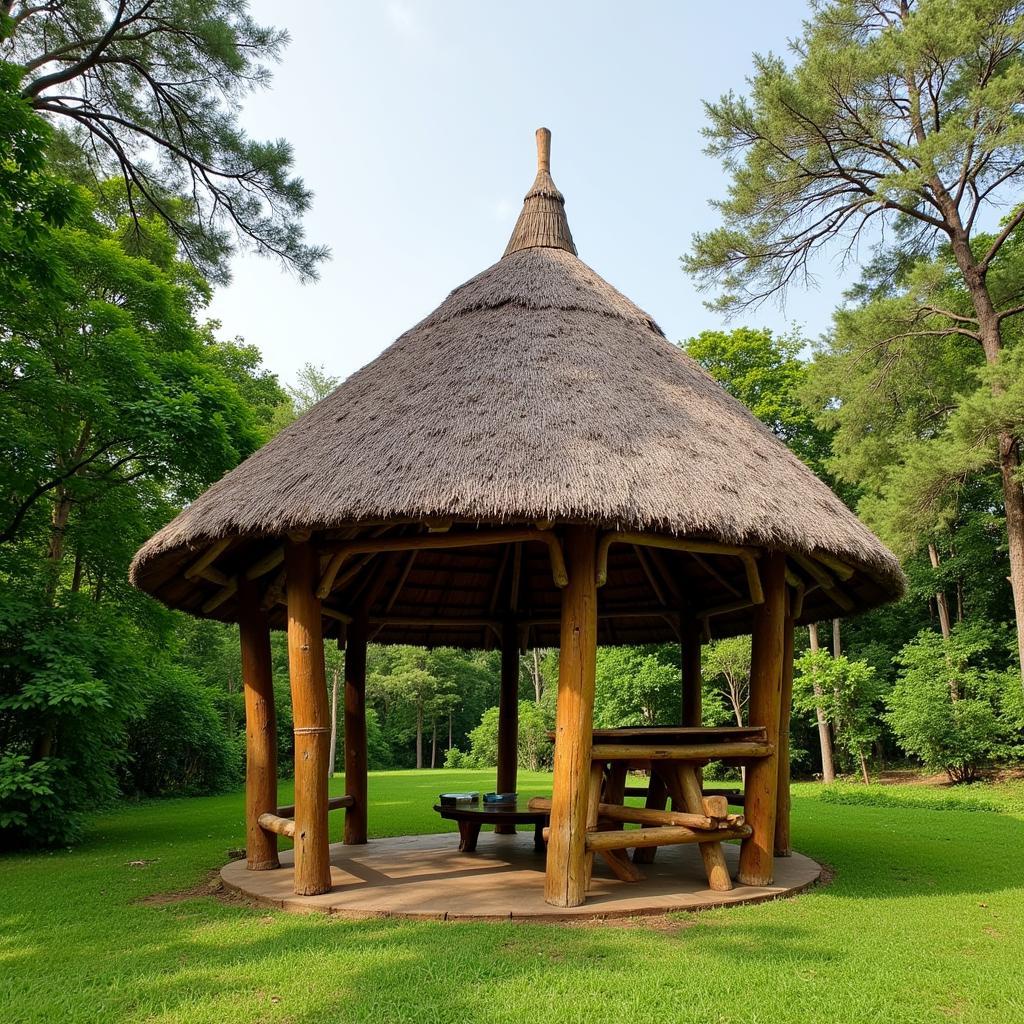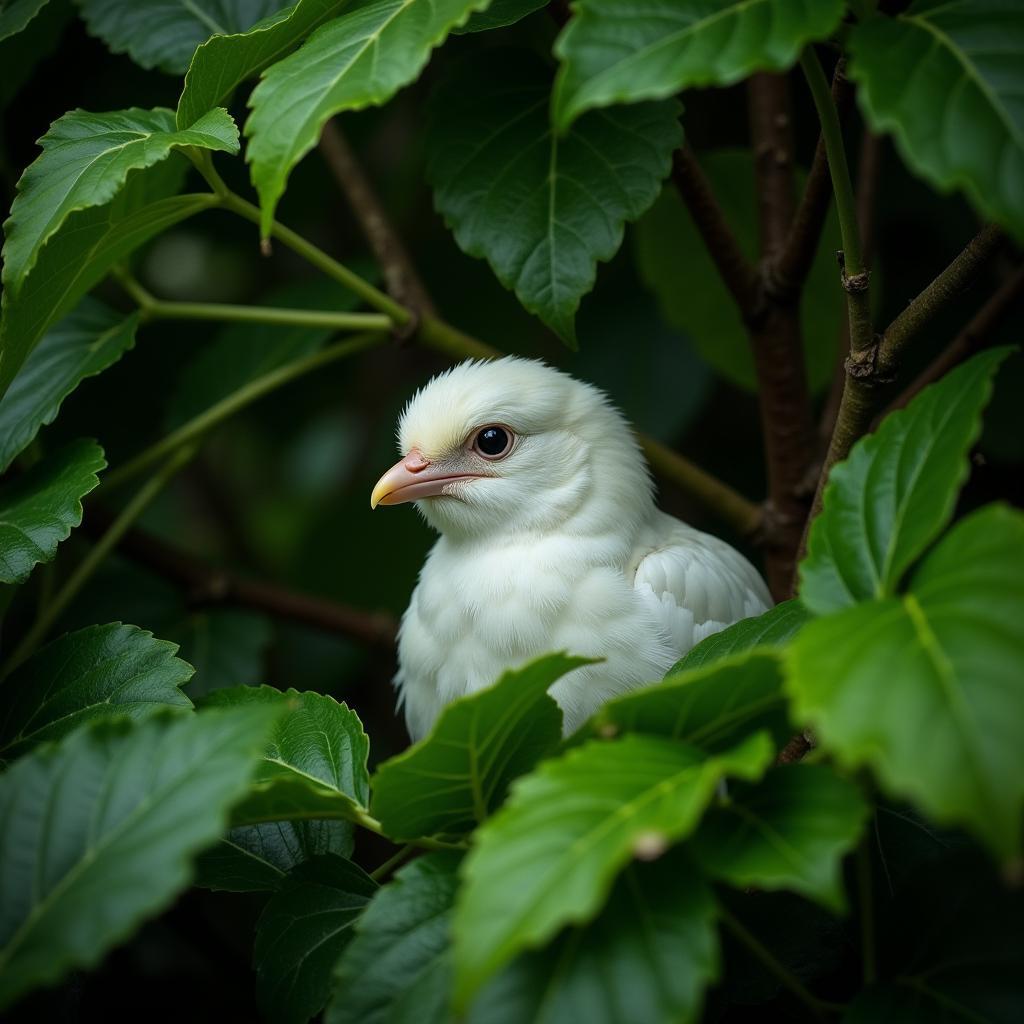Exploring the Beauty and Versatility of the African Gazebo
The African Gazebo offers a unique blend of functionality and cultural significance, providing a sheltered space for relaxation and social gatherings. From traditional thatched roofs to modern designs, these structures are an integral part of the African landscape. Let’s delve deeper into the world of the African gazebo and discover its diverse forms and uses.
A Symbol of Hospitality: The Traditional African Gazebo
Across the diverse landscapes of Africa, gazebos have long played a vital role in community life. These structures, often constructed with locally sourced materials like wood, bamboo, and thatch, represent more than just a shaded retreat. They symbolize hospitality, community, and a connection to nature. In many cultures, the gazebo serves as a focal point for social gatherings, celebrations, and even important discussions amongst village elders.
The traditional African gazebo design often reflects the specific cultural heritage of the region. For example, in some parts of West Africa, you’ll find gazebos with intricate carvings and vibrant colors, showcasing the artistic skills of local artisans. In East Africa, the Maasai people construct temporary gazebos using branches and animal hides, perfect for their nomadic lifestyle. These variations in design demonstrate the adaptability and ingenuity of African architecture.
 Traditional African Gazebo with Thatched Roof
Traditional African Gazebo with Thatched Roof
Modern Interpretations of the African Gazebo
While traditional designs hold a special place, modern interpretations of the African gazebo are gaining popularity. These contemporary structures incorporate new materials like metal and canvas, offering increased durability and design flexibility. Modern African gazebos often feature sleek lines and minimalist aesthetics, blending seamlessly with contemporary architectural styles.
These modern structures maintain the core function of providing a sheltered outdoor space, perfect for enjoying the beautiful African climate. Whether it’s a family gathering, a relaxing afternoon with a book, or simply a place to escape the midday sun, the African gazebo remains a cherished part of outdoor living.
What Materials are Used to Build an African Gazebo?
Traditional African gazebos are often built from natural materials readily available in the local environment. These include wood, bamboo, reeds, thatch, and even animal hides. Modern versions might incorporate metal, canvas, or other synthetic materials for increased durability and weather resistance.
How is an African Gazebo Used?
African gazebos are versatile structures used for a variety of purposes. They provide shade and shelter from the elements, making them ideal for outdoor gatherings, relaxation, and even as outdoor dining areas. In some cultures, they also serve as important spaces for community events and ceremonies.
Choosing the Right African Gazebo for Your Needs
Whether you’re drawn to the traditional charm of thatched roofs or the sleek lines of modern designs, selecting the right African gazebo depends on your specific needs and preferences. Consider the size of your outdoor space, the climate, and your intended use. Do you envision hosting large gatherings or creating a quiet retreat? These factors will help guide your decision.
Think about the materials. Traditional materials offer a natural aesthetic but may require more maintenance. Modern materials are often more durable but might not have the same cultural significance. Ultimately, the best African gazebo is one that blends seamlessly with your surroundings and enhances your outdoor living experience.
Embrace the Spirit of Africa with Your Own Gazebo
The African gazebo embodies a rich cultural heritage and a deep connection to the natural world. It’s a space where community thrives, stories are shared, and relaxation is embraced. Whether you choose a traditional or modern design, incorporating an African gazebo into your outdoor space can transform it into an oasis of tranquility and a celebration of African spirit.
FAQ
- What is the average lifespan of a thatched roof gazebo? A well-maintained thatched roof can last for 10-15 years.
- Are modern African gazebos easy to assemble? Many modern gazebos come with pre-fabricated parts, making assembly relatively straightforward.
- Can I customize the design of my African gazebo? Yes, many manufacturers offer customization options for size, materials, and design details.
- How do I maintain my African gazebo? Regular cleaning and occasional treatments for weatherproofing will help extend the lifespan of your gazebo.
- Where can I purchase an African gazebo? You can find African gazebos from specialized retailers, online marketplaces, and even local artisans.
- What is the typical cost of an African gazebo? The price can range widely depending on the size, materials, and design, from a few hundred dollars to several thousand.
- Are African gazebos suitable for all climates? While adaptable, some designs may be more suitable for certain climates than others.
Common Scenarios and Questions:
Scenario: Planning a wedding or large outdoor event. Question: What size gazebo will I need to accommodate my guests?
Scenario: Living in a coastal area with strong winds. Question: What type of gazebo structure is most wind-resistant?
Scenario: Wanting to create a shaded area for a poolside lounge. Question: What materials are best suited for a humid environment?
Further Reading and Related Topics on African Life:
- Exploring African Architecture and Design
- Traditional Craftsmanship in Africa
- Outdoor Living Spaces in African Homes
Need assistance? Contact us 24/7. Phone: +255768904061, Email: [email protected], Address: Mbarali DC Mawindi, Kangaga, Tanzania.
